-

Nickel carbonate CAS 12607-70-4/Nickel carbonate basic
Nickel carbonate is a light green powder with a relative density of 2.6. It is insoluble in water but soluble in dilute acid and ammonia water. When heated above 300 ℃, it decomposes into nickel oxide and carbon dioxide.
Nickel carbonate is used as a raw material for the production of nickel catalysts and nickel salts in the chemical industry, as a nickel coloring agent in the ceramic industry, and as a special nickel plating and nickel plating pH adjuster. It is also used as an analytical reagent in analytical chemistry.
-

Strontium fluoride cas 7783-48-4
Strontium fluoride cas 7783-48-4 white powder, cubic crystal system. Stable in air and oxidized to strontium oxide at temperatures above 1000 ℃. Slightly soluble in water and hydrochloric acid, insoluble in hydrofluoric acid.
Strontium fluoride is used as a toothpaste additive, preferably sodium, for color fluorescent screens, and for the production of optical glass and single crystals for lasers
-

Nickel oxide CAS 1313-99-1
Nickel oxide cas 1313-99-1 is green powder, yellow powder when overheated, specific gravity 6.6-6.8, melting point 1990 ℃. Insoluble in water and liquid ammonia. Dissolve in sulfuric acid, nitric acid, hydrochloric acid, and ammonia.
Nickel oxide is used as a binder for enamel, as well as a pigment for ceramics and glass. It is also used in the magnetic materials, metallurgy, and cathode ray tube industries, and is a raw material for manufacturing nickel salts and nickel catalysts.
-

Potassium hexafluorotitanate CAS 16919-27-0
Potassium fluotitanate is a white crystalline particle that is soluble in hot water, slightly soluble in cold water and inorganic acids. The melting point is 780 ℃.
Potassium fluotitanate is used as a catalyst for polypropylene; Leather and textile mordants; Rubber coagulant, titanium raw material.
-

Potassium hexafluorozirconate cas 16923-95-8
Potassium fluorozirconate is a white crystal that is slightly soluble in cold water and hot water. Its solubility is 6.5g/100ml (80 ℃) and 19g/100ml (100 ℃), respectively. It is toxic.
Potassium fluorozirconate is used in the production of metal zirconium, zirconium compounds, ferroalloys, magnesium aluminum alloys, steel and non-ferrous metal alloys, as well as in the atomic energy industry and advanced electrical materials, refractory materials, electric vacuum technology materials, fireworks, ceramics, enamel and glass production.
-
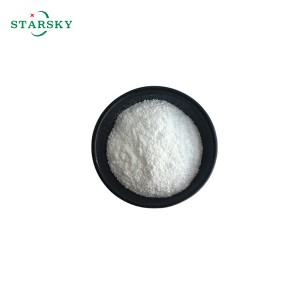
Dysprosium oxide CAS 1308-87-8
Dysprosium oxide CAS 1308-87-8 (Dy2O3) is usually a white to pale yellow powder. It is a rare earth oxide that may also have a greenish hue depending on its purity and the presence of impurities. Dysprosium oxide occurs as colorless or white crystals.
Dysprosium oxide (Dy2O3) is generally considered to be insoluble in water. It is not soluble in water or most organic solvents. However, it can be dissolved in strong acids, such as hydrochloric acid (HCl) and nitric acid (HNO3), to form dysprosium salts.
-
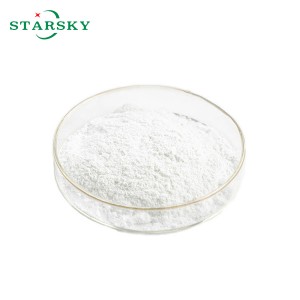
Potassium iodide CAS 7681-11-0
Potassium iodide (KI) is usually a white or colorless crystalline solid. It can also appear as a white powder or colorless to white granules. When dissolved in water, it forms a colorless solution. Potassium iodide is hygroscopic, meaning it absorbs moisture from the air, which can cause it to clump or take on a yellowish color over time if it absorbs enough moisture.
Potassium iodide (KI) is very soluble in water. It is also soluble in alcohol and other polar solvents.
-
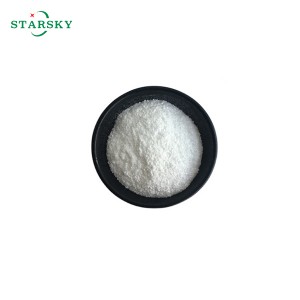
Scandium nitrate cas 13465-60-6
Scandium nitrate usually appears as a white crystalline solid. It usually exists as a hexahydrate, which means it contains water molecules in its structure. The hydrated form can appear as colorless or white crystals. Scandium nitrate is soluble in water and forms a clear solution.
Scandium nitrate is soluble in water. It usually dissolves to form a clear solution. Solubility may vary depending on the specific form (anhydrous or hydrated) and temperature, but it is generally considered to be very soluble in aqueous solutions.
-
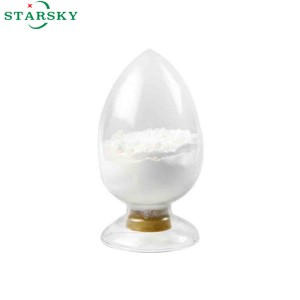
Zirconium tetrachloride/cas 10026-11-6/ZrCl4 powder
Zirconium tetrachloride (ZrCl₄) is typically found as a white to pale yellow crystalline solid. In the molten state, zirconium tetrachloride can also exist as a colorless or pale yellow liquid. The solid form is hygroscopic, meaning it can absorb moisture from the air, which may affect its appearance. The anhydrous form is often used in a variety of chemical applications.
Zirconium tetrachloride (ZrCl₄) is soluble in polar solvents such as water, alcohols, and acetone. When dissolved in water, it hydrolyzes to form zirconium hydroxide and hydrochloric acid. However, its solubility in non-polar solvents is very low.
-
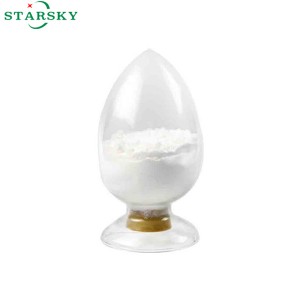
Cerium fluoride/cas 7758-88-5/CeF3
Cerium fluoride (CeF₃) is typically found as a white or off-white powder. It is an inorganic compound that can also form a crystalline structure.
In its crystalline form, cerium fluoride may take on a more transparent appearance, depending on the size and quality of the crystals.
The compound is often used in a variety of applications, including optics and as a catalyst in chemical reactions.
Cerium fluoride (CeF₃) is generally considered to be insoluble in water. It has a very low solubility in aqueous solutions, meaning that it does not dissolve appreciably when mixed with water.
However, it can be dissolved in strong acids, such as hydrochloric acid, where it can form soluble cerium complexes. In general, its low solubility in water is a characteristic of many metal fluorides.
-
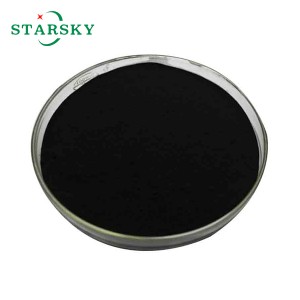
Titanium carbide/cas 12070-08-5/CTi
Titanium carbide (TiC) is a generally hard cermet material. It is usually a grey to black powder or solid with a shiny, reflective surface when polished. Its crystal form is a cubic structure and is known for its high hardness and wear resistance, and can be used in a variety of industrial applications, including cutting tools and coatings.
-

Cobalt nitrate /Cobaltous nitrate hexahydrate/cas 10141-05-6/ CAS 10026-22-9
Cobalt nitrate , the chemical formula is Co(NO₃)₂, which usually exists in the form of hexahydrate, Co(NO₃)₂·6H₂O. also call Cobaltous nitrate hexahydrate CAS 10026-22-9.
Cobalt nitrate hexahydrate is mainly used in the production of catalysts, invisible inks, cobalt pigments, ceramics, sodium cobalt nitrate, etc. It is also used as an antidote for cyanide poisoning and as a paint desiccant.











